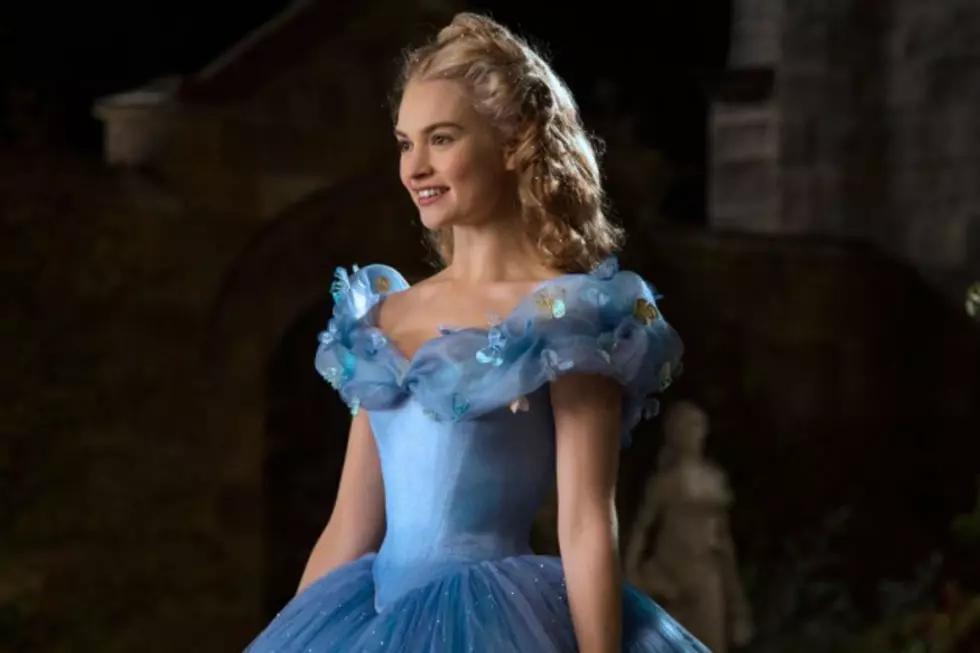
‘Cinderella’ Review: This Old Fairy Tale Still Has Some Magic
The name “Disney” brings to mind images of fair princesses, charming princes, magical fairy tales, and simple happily ever afters. In recent years, though, Disney has begun rethinking their classic properties, and releasing more thematically complex versions of their famous films. Sleeping Beauty became Maleficent, which turned a wicked witch into a sympathetic anti-hero; a whole mess of fairy tales became Into the Woods, where happily ever after preceded a whole bunch of death and tragedy. The ranks of Disney Princesses grew to include women like Merida, the bow-slinging heroine of Brave, and Anna and Elsa from Frozen, who rescued each other from an prince rather than the other way around. Seemingly every value and concept that Disney had established and reinforced through decades of repetition was up for reconsideration.
That makes Disney’s latest fairy tale, a live-action Cinderella, so surprising. It’s not a revisionist take or a winking, ironic deconstruction; instead, it’s unabashedly old-fashioned in its intense earnestness. It adds a gloss of modern special effects and a couple new wrinkles to the familiar story of the poor, abused servant girl and her magical night at the ball — but not many. Most recent Disney movies look suspiciously at traditional fables and their values. This Cinderella wants viewers to believe in them with every fiber of their being. That sincere, big-hearted belief might not be trendy, but it’s hard to resist.
Aficionados of Disney’s animated Cinderella from 1950 will recognize most of the characters and situations, but this live-action interpretation is nearly 40 minutes longer than the cartoon and spends much of that time deepening its conflicts and motivations. It also adds a significant prologue featuring Ella as a child (Eloise Webb) with her loving parents. Before her mother (Agent Carter’s Hayley Atwell) dies, she makes Ella vow to live her life according to a simple code: “Have courage and be kind.” Years later, after Ella’s grown into a caring, hard-working young woman (and actress Lily James), her father (Ben Chaplin) remarries a widow, the vain Lady Tremaine (Cate Blanchett), who moves into the family’s home with her two obnoxious daughters (Holliday Grainger and Sophie McShera). When Ell’s father dies on a business trip, Lady Tremaine dismisses the house’s staff and forces her stepdaughter to pick up the slack. Eventually the family treats her more like a servant than a loved one.
The beats progress from there as they must, though Chris Weitz’s sharp script takes care to flesh out characters that the earlier version left blank. In the animated Cinderella, the Prince is more of an ideal than a fully fleshed-out human being; he gets just a few minutes of screen time and even fewer lines of dialogue (or, for that matter, an actual name). Played by Game of Thrones’ Richard Madden, this Cinderella’s Prince Kit is vastly more developed, torn between his obligations to his kingdom and his family (his father expects him to marry a princess) and his love for Ella, who he meets by chance in the forest for a couple minutes of flirtatious banter before their big encounter at the kingdom’s ball.
Director Kenneth Branagh does infuse the vintage narrative with a few contemporary touches; Ella meets Kit while defending a stag from his hunters, marking her as a sort of animal-rights activist (a logical choice for a character who considers mice her only friends). She’s still a fairly passive character, but Branagh and Weitz come up with a smart way to make that passivity a choice, and a heroic one at that. And Cate Blanchett’s Lady Tremaine, though haughty and cruel, gets enough speeches about her tragic backstory to complicate some of her wicked behavior. Regardless, this is no radical reinvention; this Cinderella is a handsome, classical retelling that starts at once upon a time and ends at happily ever after.
In between, the film belongs to James, who is even more charming than her handsome prince. Her Ella is almost impossibly pure and good; in the wrong hands, the part could have verged on laughable self-parody. But James’ bright smile makes the character’s innocence appealing, and while Ella is still a bit of a pushover she also gets a few moments where she stands up to Lady Tremaine; James nails them all. A PG-rated Disney fairy tale is hardly a place for sexual tension, but she also generates palpable (if totally chaste) chemistry with Madden as well.
I’ve been married for six years to a woman who loves Cinderella. As a result, I have seen almost every single version of the story committed to film (including Hilary Duff’s A Cinderella Story; if my relationship can survive that ordeal, it can survive anything). So I can say with some confidence that 2015’s Cinderella is one of the very best. It’s heartfelt, romantic, and funny — particularly when Helena Bonham Carter arrives to spruce up Ella’s wardrobe as her Fairy Godmother. The costumes and production design are stunning (her dress sparkles!), and Branagh’s direction sports several clever touches. (Note, for example, the way the camera swirls around Kit and Ella whenever they meet, as if some kind of reverse centrifugal force is pulling them together.) Disney’s revisionist movies have been hugely successful with audiences, but most were dark and depressing, and none were as emotionally satisfying as Cinderella. There’s very little hip or new about this movie. Ironically, that’s precisely what makes it feel so refreshing.
Cinderella plays in theaters with a new Frozen short, “Frozen Fever.” The characters are still cute, but the song is no “Let It Go.”
RATING:



